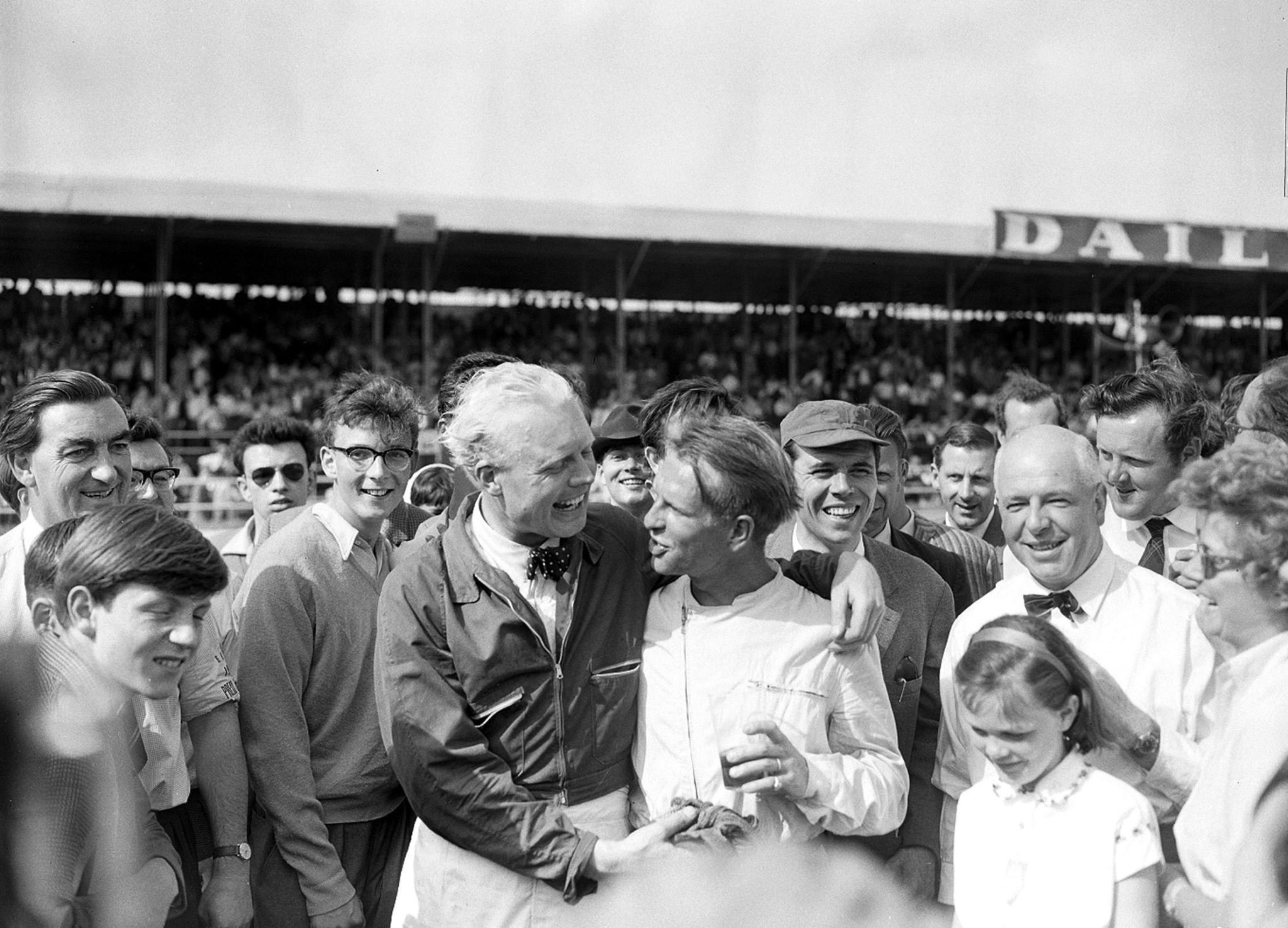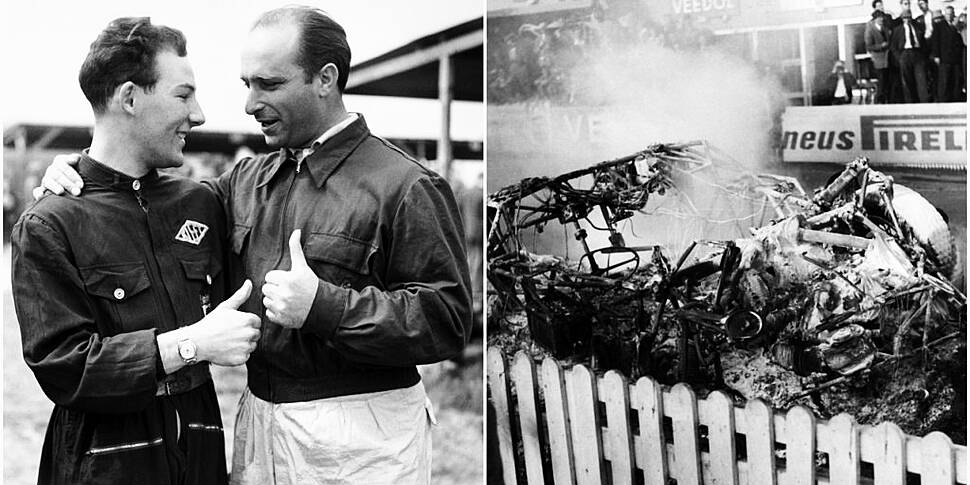The 1950s were a bloody decade for motor racing, with the recent passing of Formula 1 legend Stirling Moss only highlighting how dangerous his profession had been in the early days.
Of course, driving cars at extremely fast speeds still carries with it inherent dangers today, and those dangers will never go away.
But, as Wexford writer Tom Mooney highlights during his research for a book on the danger years of motor racing, you need only look at the year 1955 for an indication of how treacherous a time it was behind a wheel.
In May of that year the first ever Formula 1 double world champion, Alberto Ascari, was killed during testing at Monza.
Pierre Levegh, and at least 80 spectators, were killed in a horrible incident at the 24-hour race at Le Mans, as his Mercedes SLR catapulted into a grandstand.
There were countless others that year - Bill Vukovich burned to death at the Indianapolis 500. Here in Ireland Don Beauman died competing in the Leinster Trophy in Wicklow when his car struck a tree and caught fire, and three were killed in one afternoon at the FIA World Sports Car Championships in Antrim.
Mooney told Off The Ball's Shane Hannon that there was certain attitude towards danger prevalent in drivers at the time. An accident at the famed Le Mans track in France killed scores - but the race was ultimately completed as ambulances carried away the dead and dying. Mike Hawthorn and Ivor Beub won in their car, completing what Mooney calls "the most shameful lap of honour in history" after their win.
"There was the tragedy at Le Mans, in which a Mercedes driver, Pierre Levegh, crashed into the crowd killing anything from 80 to 90 people.
"There was pressure on Mercedes to withdraw at about two in the morning, and one of the drivers putting pressure on the team not to withdraw was Stirling Moss, because he'd never won Le Mans.
"The attitude prevalent at the time was 'You can't bring the dead back.' I think I was curious about researching a book about these guys because I was wondering where did this attitude come from?
"There was an English driver called Roger Williamson, and in 1973 he was racing in the Dutch Grand Prix, his car overturned and went on fire.
 Leicester builder (and owner of Donington Park race circuit) Tom Wheatcroft at the wheel of an exact replica of Shell/Motorsport Championship winning GRD 372 presented to him by racing car driver Roger Williamson.
Leicester builder (and owner of Donington Park race circuit) Tom Wheatcroft at the wheel of an exact replica of Shell/Motorsport Championship winning GRD 372 presented to him by racing car driver Roger Williamson."One driver stopped and tried to lift the car and couldn't lift it. Williamson either suffocated or burned to death, and it was live on television. I watched it and wondered, where does the mentality come from where you have drivers who must have known this guy quite well, who continued to drive around in circles while this car was on fire and the driver was underneath?
"I realised I had to go back into the early 50s for that type of mentality - you don't have the 1950s without that generation coming just out of the war. The likes of Moss was 21 when he drove in his first Grand Prix, and he was surrounded by other really talented Englishmen - Peter Collins and Mike Hawthorn."
Mooney says having grown up with World War Two in the background, many drivers were numb to the true meaning of risk.
"Had they been old enough they would have hopped into a Hurricane or a Spitfire. Remember they were all from the London area and would have watched the Battle of Britain from their gardens.
"They would have seen men die horribly, they would have had neighbours who fought in the Battle of Britain. They came into Formula 1 in 1950 already hardened by life.
"In the same way that Covid-19 will affect teenagers going forward, the experience of the Second World War hardened these people. I'm not saying they became immune to violence, but to a degree they were able to move on.
"They would have read stories about Battle of Britain pilots, especially in Spitfires. When they realised they were going to crash they used to send out this message to their colleagues saying 'I'm about to buy it chaps!'
"It was very gung-ho, there was no crying or anything like that. They [the early Formula 1 drivers] were the same. They never complained - they would turn up, without managers or press agents, they were guns for hire. Sometimes they didn't know what car they were driving unless they belonged to a team.
"They would hop into a car and they would give it everything for three hours, flat out, without a break."
Mooney says Moss, who died at the age of 90 earlier this month, had a certain cold attitude towards the dangers involved in his sport.
"Moss had this predilection for driving British homemade cars. There was a huge level of patriotism among drivers because this was only ten years after the war.
 Peter Collins, winner of the British Grand Prix at Silverstone,is congratulated by runner up Mike Hawthorn. Collins, driving a Ferrari, won at an average speed of 102.05 miles an hour.
Peter Collins, winner of the British Grand Prix at Silverstone,is congratulated by runner up Mike Hawthorn. Collins, driving a Ferrari, won at an average speed of 102.05 miles an hour."When you see racing cars today, their livery and colours, Ferrari have red because the colour representing Italy after the war was red.
"The colour representing Mercedes - the Germans - was silver. The colour representing Britain was green, France blue, America white... and that still exists today.
"Moss was extremely talented - there was a famous, but bloody Belgian Grand Prix in 1960. Moss crashed out and broke both of his legs, and was seriously injured.
"This was a race in which two other English drivers were killed - Alan Stacey and Chris Bristow. Bristow's car came off the track, it catapulted him out of the car, and he was decapitated by barbed wire. That was the level of health and safety trackside.
"Moss broke his legs, he was only able to compete in three of nine Grand Prix that year, and he still came third. He came third, can you imagine if he had competed in all nine?
"Moss' attitude to danger was this - he used to say that 'When you're playing with your life, it gives racing a whole new meaning.' In one way, that's kind of scary. But that seemed to be the attitude of a lot of drivers in the fifties."
Download the brand new OffTheBall App in the Play Store & App Store right now! We've got you covered!
Subscribe to OffTheBall's YouTube channel for more videos, like us on Facebook or follow us on Twitter for the latest sporting news and content.








